| Date | Text | |
|---|---|---|
30 Nov 1931
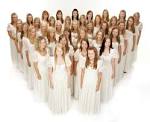
Estonian |
Estonian (astronomy and space ) Estonian astronomer Ernst Öpik postulates that long-period comets originate in an orbiting cloud (the Öpik–Oort cloud) at the outermost edge of the Solar System. |
|
30 Nov 1931
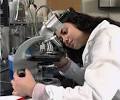
geneticist |
geneticist (biology) English geneticist C. D. Darlington publishes Recent Advances in Cytology, describing the mechanics of chromosomal crossover and its role in evolutionary science. |
|
30 Nov 1931

J. B. S. Haldane |
J. B. S. Haldane (biology) English geneticist J. B. S. Haldane publishes The Causes of Evolution, unifying the findings of Mendelian genetics with those of evolutionary science. |
|
30 Nov 1931

physiologist |
physiologist (biology) American physiologist Walter Bradford Cannon publishes The Wisdom of the Body, developing and popularising the concept of homeostasis. |
|
30 Nov 1931

Braggite |
Braggite (earth sciences) Braggite is first described, the first mineral discovered with the assistance of X rays. |
|
30 Nov 1931

Menger-Nöbeling theorem |
Menger-Nöbeling theorem (mathematics) Menger-Nöbeling theorem. |
|
30 Nov 1931
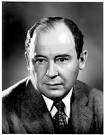
John von Neumann |
John von Neumann (mathematics) John von Neumann makes foundational contributions to ergodic theory in a series of papers. |
|
30 Nov 1931

Jewish-American |
Jewish-American (medicine) Jewish-American gastroenterologist Burrill Bernard Crohn and colleagues describe a series of patients with "regional ileitis", inflammation of the terminal ileum, the area most commonly affected by the condition which will become known as Crohn's disease. |
|
30 Nov 1931
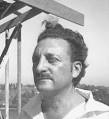
Rudolph Schindler |
Rudolph Schindler (medicine) Rudolph Schindler introduces the first semi-flexible gastroscope, in Germany. |
|
30 Nov 1931
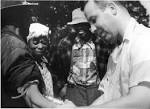
Tuskegee syphilis experiment |
Tuskegee syphilis experiment (medicine) Commencement of the 40-year Tuskegee syphilis experiment by the U.S. Public Health Service to study the natural progression of untreated syphilis in poor African-American sharecroppers in Alabama without their informed consent. |
|
30 Nov 1931

Gerhard Domagk |
Gerhard Domagk (medicine) Gerhard Domagk develops a chemotherapeutic cure for streptococcus |
|
30 Nov 1931
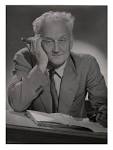
Albert Szent-Györgyi |
Albert Szent-Györgyi (pharmacology) Albert Szent-Györgyi and Charles Glen King identify hexuronic acid as an anti-scorbutic. |
|
30 Nov 1931

James Chadwick |
James Chadwick (physics) James Chadwick discovers the neutron.Werner Heisenberg explains its symmetries by introducing the concept of isospin. |
|
30 Nov 1931

Kennedy–Thorndike experiment |
Kennedy–Thorndike experiment (physics) The Kennedy–Thorndike experiment shows that measured time as well as length are affected by motion, in accordance with the theory of special relativity. |
|
05 Jan 1932
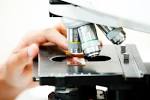
pathology |
pathology (medicine) The pathology of Cushing's syndrome is first described by Harvey Cushing. |
|
16 Jan 1932

Dian Fossey |
birth Dian Fossey Dian Fossey (murdered 1985), American primatologist. |
|
27 Feb 1932
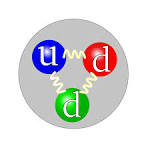
Neutron |
Neutron In 1932, the neutron was discovered by Dr. James Chadwick. |
|
29 Feb 1932
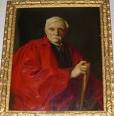
George Claridge Druce |
death George Claridge Druce George Claridge Druce (born 1850), English botanist. |
|
14 Mar 1932
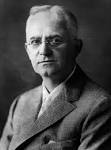
George Eastman |
death George Eastman Died 14 Mar 1932 at age 77 (born 12 Jul 1854). American inventor and industrialist who was a pioneering manufacturer of photographic materials, including rolled film (first patented on 14 Oct 1884) and the Kodak camera (patented 4 Sep 1888). He founded the Eastman-Kodak Company, which for years held a virtual monopoly in the camera and film industry. His introduction of the first Kodak (a coined word, 1888, that became a trademark) camera helped to promote large-scale amateur photography. |
|
31 Mar 1932
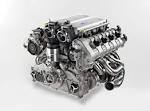
Eight-cylinder engine |
Eight-cylinder engine In 1932, The Ford Motor Company publicly unveiled its "V-8" engine. |
|
03 Apr 1932

Wilhelm Ostwald |
death Wilhelm Ostwald Wilhelm Ostwald (born 1853), Baltic German chemist. |
|
20 Apr 1932

Giuseppe Peano |
death Giuseppe Peano Giuseppe Peano (born 1858), Italian mathematician. |
|
26 Apr 1932
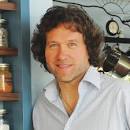
Michael Smith |
birth Michael Smith Michael Smith (died 2000), English-born biochemist, winner of the 1993 Nobel Prize in Chemistry. |
|
29 May 1932

Paul R. Ehrlich |
birth Paul R. Ehrlich Born 29 May 1932. Paul Ralph Ehrlich was an American biologist and educator who in 1990 shared Sweden's Crafoord Prize (established in 1980 and awarded by the Royal Swedish Academy of Sciences, to support those areas of science not covered by the Nobel Prizes) with biologist E.O. Wilson. He has been a pioneer in alerting the public to the problems of overpopulation and in raising issues of population, resources, and the environment as matters of public policy. Ehrlich is regarded as the co-founder, along with Peter H. Raven, of the field of coevolution, and has pursued long-term studies of the structure, dynamics and genetics of natural butterfly populations. |
|
29 May 1932

Cuthbert Christy |
death Cuthbert Christy Cuthbert Christy (born 1863), English medical investigator, zoologist and explorer. |
|
10 Jun 1932

Artificial lightning |
Artificial lightning In 1932, artificial lightning using 10 million volts of electricity was demonstrated in the U.S. by the General Electric Company at Pittsfield, Mass. This was twice the previous maximum voltage produced in a laboratory. |
|
21 Jun 1932

Marshall "Major" Taylor |
death Marshall "Major" Taylor Marshall "Major" Taylor (born 1878), African American racing cyclist. |
|
22 Jun 1932

Bernhard Lauritz Frederik Bang |
death Bernhard Lauritz Frederik Bang Died 22 Jun 1932 at age 84 (born 7 Jun 1848). Danish veterinarian who in 1897 discovered Brucella abortus (Bang's bacillus), the causative agent of contagious abortion in cattle and of brucellosis (undulant fever) in human beings. Bang's teaching, with the introduction of antiseptics, represented a watershed in veterinary surgery. Although long recognized in human medicine, antiseptics had been met with little attention by veterinaries. Bang was instrumental in showing that tuberculosis could be transmitted by cow's milk and in developing isolation techniques. He was the first to use tuberculin, discovered by Robert Koch in 1890, on cattle. He used it diagnostically, rather than therapeutically, as a means for liberating livestock of tuberculosis and to create clean breeding centres. |
|
09 Jul 1932
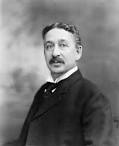
King Camp Gillette |
death King Camp Gillette King Camp Gillette (born 1855), American inventor. |
|
14 Jul 1932

Fran Jesenko |
death Fran Jesenko Fran Jesenko (born 1875), Slovene botanist and plant geneticist. |
|
22 Jul 1932
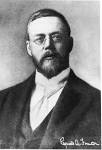
Reginald Fessenden |
death Reginald Fessenden Reginald Fessenden (born 1866), Canadian American radio broadcasting pioneer. |
|
29 Jul 1932

Sir William Willcocks |
death Sir William Willcocks Died 29 Jul 1932 at age 79 (born 27 Sep 1852). British civil engineer who proposed and designed the first Aswan (Assuan) Dam (1898-1902) on the River Nile and executed major irrigation projects in South Africa and Turkey. He was born studied engineering in India before moving to Egypt in 1883, becoming director-general of reservoirs. On being asked to find a means of storing Nile water to allow the growth of an extra crop of cotton, he found a depression at Wadi Rayan, into which part of the annual flood waters could be diverted, then fed back into the river in the dry season. When persuaded to build a dam, he designed the Aswan Dam to allow the silt-laden waters of the early weeks of the annual flood to pass through, and only capture for storage the clear water that flowed later in the season. |
|
02 Aug 1932
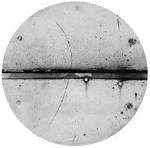
positron |
positron (physics) The positron is observed by Carl Anderson. |
|
09 Aug 1932

John Charles Fields |
death John Charles Fields John Charles Fields (born 1863), Canadian mathematician. |
|
15 Aug 1932

Robert L. Forward |
birth Robert L. Forward Robert L. Forward (died 2002), American science fiction author and physicist. |
|
18 Aug 1932

Luc Montagnier |
birth Luc Montagnier Luc Montagnier, French virologist and joint recipient of the 2008 Nobel Prize in Physiology or Medicine for the discovery of the human immunodeficiency virus (HIV). |
|
24 Aug 1932
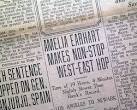
Amelia Earhart record |
Amelia Earhart record In 1932, Amelia Earhart became the first woman to fly non-stop across the United States, traveling from Los Angeles to Newark, N.J., in just over 19 hours. Earlier in the same year, on 20 May 1932, she accomplished the first solo flight by a woman across the Atlantic Ocean. |
|
16 Sep 1932
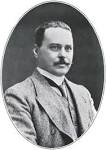
Ronald Ross |
death Ronald Ross Sir Ronald Ross (born 1857), British physiologist. |
|
18 Sep 1932
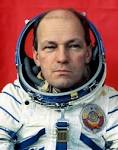
Nikolai Rukavishnikov |
birth Nikolai Rukavishnikov Nikolai Rukavishnikov (died 2002), Russian cosmonaut. |
|
03 Oct 1932

Maximillian Franz Joseph Cornelius (Max) Wolf |
death Maximillian Franz Joseph Cornelius (Max) Wolf Died 3 Oct 1932 at age 69 (born 21 Jun 1863). Maximilian Franz Joseph Cornelius Wolf was a German astronomer who founded and directed the Königstuhl Observatory. He used wide-field photography to study the Milky Way and used statistical treatment of star counts to prove the existence of clouds of dark matter. He was among the first astronomers to show that the spiral nebulae have absorption spectra typical of stars and thus differ from gaseous nebulae. His most important contribution was the introduction of photography to discover hundreds of asteroids, the first of which he named Brucia in honor of the donor of his 16-inch double telescope, Catherine Wolfe Bruce. |
|
13 Oct 1932

John G. Thompson |
birth John G. Thompson John G. Thompson, American mathematician. |
|
06 Nov 1932

François Englert |
birth François Englert François Englert, Belgian theoretical physicist, joint recipient of the 2013 Nobel Prize in Physics for discovery of the Higgs mechanism. |
|
12 Nov 1932

Dugald Clerk |
death Dugald Clerk Sir Dugald Clerk (born 1854), Scottish-born mechanical engineer. |
|
01 Dec 1932
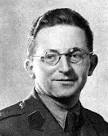
Marian Rejewski |
Marian Rejewski (mathematics) Marian Rejewski of the Polish Biuro Szyfrów applies pure mathematics – permutation group theory – to breaking the German armed forces' Enigma machine ciphers. |
|
05 Dec 1932

Sheldon Lee Glashow |
birth Sheldon Lee Glashow Born 5 Dec 1932. American theoretical physicist who, with Steven Weinberg and Abdus Salam, received the Nobel Prize for Physics in 1979 for their complementary efforts in formulating the electroweak theory, which explains the unity of electromagnetism and the weak force. |
|
25 Dec 1932
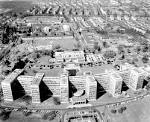
IG Farben |
IG Farben (pharmacology) IG Farben file a patent application in Germany for the medical application of the first sulfonamide drug, Sulfonamidochrysoidine (KI-730; which will be marketed as Prontosil), following Gerhard Domagk's laboratory demonstration of its properties as an antibiotic. |